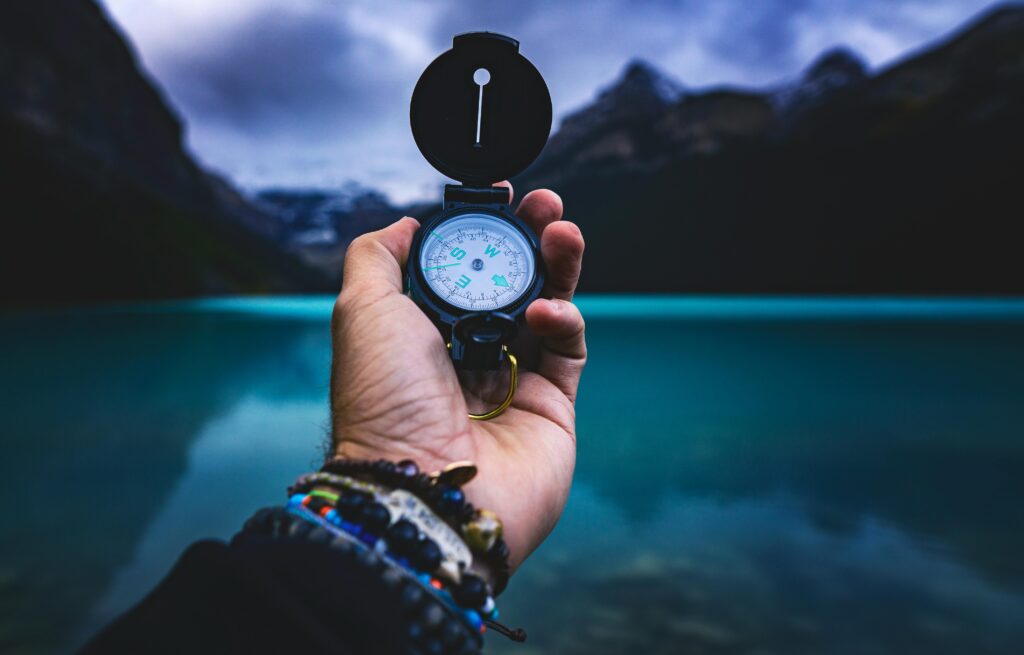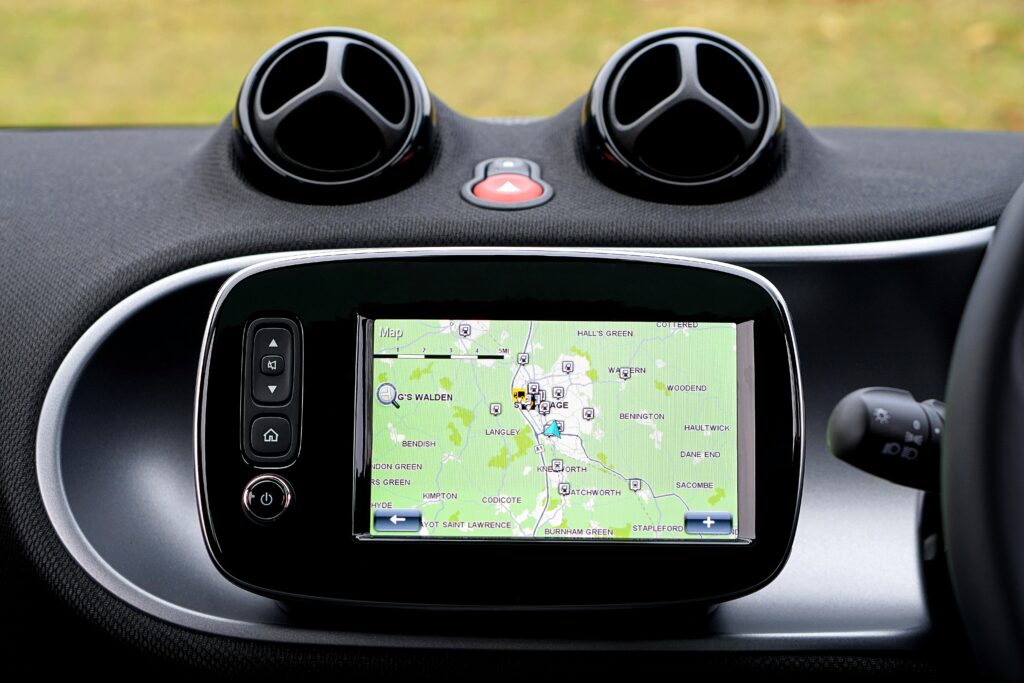Hey there! If you’ve ever found yourself wondering how to navigate using a map and compass, you’re in the right place. Being able to read a map and use a compass can be a valuable skill, whether you’re out hiking, camping, or just exploring a new city. Let’s dive into some basics and tips to help you navigate with confidence using these tools. How do I navigate using a map and compass?
Have you ever found yourself lost in the great outdoors without any cell phone signal or GPS? Don’t worry; you can always rely on the traditional methods of navigation – using a map and compass. In this article, I will guide you through the process of navigating using a map and compass so you can confidently find your way back to civilization or reach your destination.

Getting Started with Map and Compass Navigation
So you’ve found yourself in a situation where you need to navigate using a map and compass. The first step is to understand the basics of how to use these tools effectively. A map is a two-dimensional representation of the landscape you are in, showing landmarks, terrain features, and topographical information. A compass, on the other hand, is a tool that helps you determine direction and orient your map.
Understanding Map Elements
Before you can start navigating with a map, you need to understand the different elements that make up a map. These include:
-
Scale: Indicates the relationship between the distance on the map and the actual distance on the ground. For example, a map with a scale of 1:50,000 means that 1 unit of measurement on the map represents 50,000 units on the ground.
-
Legend: A key that explains the symbols and colors used on the map. This helps you interpret features such as roads, trails, bodies of water, and elevation contours.
-
Grid Lines: Horizontal and vertical lines that divide the map into squares or sections. These grid lines help you locate specific points on the map using coordinates.
Using a Compass for Direction
A compass is an essential tool for navigating in the wilderness. It helps you determine your direction of travel and helps you orient your map. Here are some key features of a compass:
-
Magnetic Needle: The needle that always points to magnetic north. This is different from true north and is important for determining your direction accurately.
-
Baseplate: The clear, flat part of the compass that contains the direction of travel arrow and the compass housing.
-
Orienting Arrow: An arrow on the baseplate that you use to align the compass with the map for accurate navigation.
Deciphering Map Symbols
When looking at a map, you will come across various symbols, colors, and patterns that represent different landscape features. Some common map symbols include:
-
Contour Lines: Lines that connect points of equal elevation. Contour lines can help you visualize the terrain, including hills, valleys, and ridges.
-
Coded Paths: Different line patterns representing trails, roads, and other paths. Dashed lines usually represent trails, while solid lines represent roads.
-
Water Features: Symbols for rivers, lakes, streams, and other bodies of water. These features can help you identify water sources for navigation or survival.
Orienting Your Map with a Compass
Now that you understand the basics of using a map and compass, let’s dive into the process of orienting your map to help you navigate accurately. The key to successful navigation is aligning your map with the surrounding landscape. Here’s how you can orient your map using a compass:
Step 1: Set the Map and Compass
-
Lay the map flat: Place your map on a flat surface, making sure it is facing the correct direction (with the top of the map pointing north).
-
Hold the compass: Hold your compass flat in your palm, with the direction of travel arrow pointing away from you.
Step 2: Align the Compass with the Map
- Rotate the compass: Rotate your compass until the magnetic needle aligns with the orienting arrow on the baseplate. This will ensure that your compass is pointing north.
Step 3: Turn Yourself
- Rotate Your Body: Turn your entire body until the magnetic needle is aligned with the orienting arrow. Congratulations! Your map is now oriented, and you are ready to navigate.
Taking Bearings for Navigation
Now that you have your map oriented, you can start taking bearings to navigate to specific points or landmarks. A bearing is a direction measured in degrees from one point to another. Here’s how you can take bearings using your compass:
Step 1: Find Your Target
- Identify your target: Locate the point or landmark you want to navigate to on the map. This could be a mountain summit, a trail junction, or a campsite.
Step 2: Orient Your Map
- Align your map and compass: Align your map and compass to ensure they are pointing in the same direction. This step is crucial for accurate navigation.
Step 3: Find the Magnetic North
- Rotate the compass: Rotate the compass until the magnetic needle aligns with the orienting arrow. This will indicate the direction of magnetic north.
Step 4: Take the Bearing
-
Lay the compass over the map: Place the edge of your compass on the map with the direction of travel arrow pointing toward your target.
-
Read the bearing: Note the degree reading (in degrees) at the index line on the compass housing. This is your bearing.
Using Bearings to Navigate
Now that you have your bearing, it’s time to put it into action and navigate to your target. Here are some tips for using bearings effectively:
Step 1: Sight Your Target
- Look for landmarks: Identify landmarks or features in the direction of your bearing that you can use to navigate towards your target.
Step 2: Walk Your Bearing
-
Keep the bearing: Hold your compass in front of you to ensure you are walking in the correct direction.
-
Check your progress: Periodically check your compass and landmark references to stay on course.
Step 3: Adjust as Needed
-
Make adjustments: If you veer off course, make necessary adjustments to your bearing and direction of travel.
-
Reorient as needed: Re-orient your map and compass as you reach checkpoints along the way.

Navigating Without a Straight Line
In some cases, following a straight line may not be the most practical or safe option for navigation. Here are some techniques for navigating without following a direct bearing:
Step 1: Account for Terrain Features
- Consider terrain: Take into account obstacles such as cliffs, rivers, dense vegetation, or dangerous terrain that may require you to make detours.
Step 2: Use Handrails and Backstops
-
Identify landmarks: Use natural features such as rivers, ridgelines, or other prominent landmarks as handrails to guide your navigation.
-
Set backstops: Mark points beyond your target that will indicate when you should stop and reassess your progress.
Step 3: Navigate Safely
- Travel with caution: Always prioritize your safety when navigating through challenging terrain. Pace yourself and take breaks as needed.
Tips for Successful Map and Compass Navigation
Navigating using a map and compass may seem daunting at first, but with practice and the right techniques, you can become a proficient navigator. Here are some additional tips for successful map and compass navigation:
Practice in Familiar Territory
-
Start easy: Begin by practicing navigation in familiar terrain, such as local parks or nature reserves, before venturing into more remote areas.
-
Build confidence: Familiarize yourself with map reading and compass skills to build your confidence as a navigator.
Stay Oriented and Aware
-
Be observant: Stay aware of your surroundings and look for familiar landmarks, features, and signs that will help you navigate.
-
Check your bearings: Periodically check your compass and map orientation to ensure you are on the right track.
Plan Ahead and Prepare
-
Trip planning: Before heading out, plan your route, identify key waypoints, and estimate distances to help you stay on course.
-
Check the weather: Be aware of changing weather conditions that can affect visibility and terrain conditions.
Stay Calm and Think Clearly
-
Stay calm: In case you get lost or disoriented, remain calm, and think logically about your next steps.
-
Decision-making: Evaluate your options and make informed decisions about your navigation strategy.
Learn from Experience
-
Reflect on your journey: After completing your navigation, reflect on your experience, and learn from any challenges or mistakes encountered.
-
Continuous learning: Keep honing your map and compass skills through practice, training courses, and outdoor experiences.

Conclusion
Navigating using a map and compass is a valuable skill for outdoor enthusiasts, hikers, campers, and adventurers. By learning how to read maps, use a compass, orient your map, and take bearings accurately, you can confidently explore the wilderness and reach your destination safely. Remember to practice, stay aware of your surroundings, and enjoy the journey of navigating through diverse landscapes with the trusty tools of a map and compass. Happy navigating!